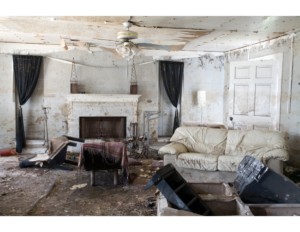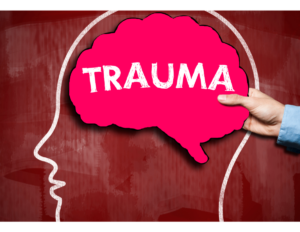When the storm has passed
and the roads are tamed
and we are the survivors
of a collective shipwreck.
~Alexis Valdes
BEFORE…
A typical day contained scheduled appointments with people needing to process and pray with someone about life transitions and stressors like job dissatisfaction, the upcoming wedding, or the struggle of simultaneously caring for young children and aging parents. Time would be carved out to read, reflect, and write either the sermon or lesson plan for Sunday. Hospital visits were made in the afternoon as needed, and committee meetings were held in the evening. Dressing for work meant a well-tailored suit and heels, with careful attention to hair and makeup.
AND AFTER…
A typical day included showing up early to a congregant’s house to help sort through the soggy, moldy, putrid smelling remnants of what was their life’s treasures to see what could be salvaged before taking to the road what could not. A sledgehammer and crowbar were common work accessories to gut houses, removing all the moldy and warped flooring and drywall. Dressing for work meant jeans, the old pair falling apart not the stylish pair, a t-shirt, and tennis shoes, with careful attention to sunscreen application and having enough water and KN-95 masks.
This brief snapshot is a glimpse into what life was like for me, a pastor serving in New Orleans when Hurricane Katrina made landfall on August 29, 2005. While no two individuals “before” and “after” narrative is the same, traumatic events affect one’s physical, mental, emotional, and spiritual well-being when people experience trauma and it is common that life is divided into “before” and “after”.
“Trauma is not just an event that took place sometime in the past; it is also the imprint left by that experience on the mind, brain, and body. This imprint has ongoing consequences for how the human organism manages to survive in the present.”[1]
THE PRESENT
While no longer a resident or pastor in New Orleans, I continue to reside and pastor in a community susceptible and vulnerable to hurricanes. Palma Ceia Presbyterian Church is located in Tampa, Florida on a four-by-eight-mile peninsula surrounded by two bays and situated approximately twenty-miles from the Gulf of Mexico. The risk for this community to experience acute trauma from a hurricane is consequently high. Shaped by the experience in New Orleans and my current ministerial context, this project explores how the function of the sermon is impacted within the larger liturgical setting of worship in the immediate aftermath of trauma from communal acute natural disasters.
METHOD
A basic overview of trauma and trauma’s impact on individuals and communities shows the effects of trauma, “shatters meaning; leaves us disordered, disempowered and feeling disconnected,” and that our responses to trauma include “anger, anxiety, depression, and asking questions (personal and global).”[2] Common reactions to communal trauma include shock, a sense of chaos, survivor guilt, and preoccupation with images of death and destruction.[3] “The experience of trauma at its worst,” says Kai Erikson, “can mean not only a loss of confidence in the self, but a loss of confidence in the surrounding tissue of family and community, in the structures of human government, in the larger logics by which humankind lives, in the ways of nature itself, and often…in God.”[4] Acknowledging the effects of trauma impacts the role of worship within a congregation, and more specifically, the function a sermon serves within the larger liturgical setting of worship. After considering both trauma theory and worship practices, the paper argues using preaching as a mode of pastoral care in congregations whose communities have experienced acute trauma from natural disasters.
The aim of an excellent crisis sermon is to be a cup of cold water for someone who is absolutely parched standing out in the hot noon-day sun. Water may not be the most extravagant drink and it likely is not served in the finest glassware you have to offer, but extravagance and finery is not what is needed. The thirsty do not care if the water comes from the tap and served in a chipped glass or paper cup. What matters is their thirst is seen and in response to being seen they are offered something which will quench the need.
CONCLUSION
The disruption, threat, and destruction to safety, trust, and meaning found in individuals is also evidenced in the fabric of the community experiencing acute trauma from natural disasters. Worship, by its very nature, is a particular gift and powerful tool for the community to begin a process of feeling safe, building trust, and processing meaning. A worship service bears witness to God’s salvific work through Jesus Christ, and within the broader liturgical context of worship the sermon functions to bear witness to God’s work to a particular people living in a particular time and place. Thus, context must inform the content of a sermon. When a community experiences the traumatic event of a natural disaster the sermon must function both as a response to the natural disaster and to God’s character and promises amid the community’s experience of the trauma. Such attention can provide nurture, support, and encouragement for people living and grappling with shattered meaning, one of trauma’s effects.
WHAT DOES THIS LOOK LIKE?
- Gather for worship in the space and at the time the community is accustomed as soon as it is safe to do so. This provides continuity and familiarity.
- Use the familiar pattern of worship known by the congregation. The familiar pattern provides comfort and encouragement despite the fear of the unknown.
- Be authentic! Preachers, name the experience of trauma and acknowledge you are a co-sufferer with the community. Are you at a loss for words? Say so. Are you unable to make sense of what has occurred? Say so. Model the truth that God comes before us, travels alongside us, and goes ahead of us – even amid our suffering and experiences of trauma.
Preachers and worship leaders who identify as co-sufferers with the wider community post-disaster model for the community a relationship to and with God that trusts the promises of faith in chaotic times and allows the liturgy, the work of the people, to fully reflect the current reality of the people’s context. Worship and preaching provide the space and opportunity for communities to grieve, heal, and experience God’s grace when acute natural disasters result in communal trauma.
Resources for Further Use
Baldwin, Jennifer. Trauma-Sensitive Theology: Thinking Theologically in the Era of Trauma. Eugene, Oregon: Cascade Books, 2018.
Jeter, Joseph R. Crisis Preaching: Personal and Public. Nashville, Tenn.: Abingdon Press, 1998.
Jones, Serene. Trauma + Grace: Theology in a Ruptured World. Second. Louisville, Ky.: Westminster John Knox Press, 2019.
Sancken, Joni S. Words That Heal: Preaching Hope to Wounded Souls. Nashville: Abingdon Press, 2019.
Southgate, Christopher, Carla Grosch-Miller, Hilary Ison, and Megan Warner, eds. Tragedies and Christian Congregations: The Practical Theology of Trauma. 1st edition. New York: Routledge, 2019.
Van der Kolk, Bessel A. The Body Keeps the Score: Brain, Mind, and Body in the Healing of Trauma. New York: Viking, 2014.
Wagner, Kimberly. “What Do We Preach? Trauma, Lament, and Social Action.” Call to Worship 52.3 (February 2019): 8–15.
FOOTNOTES
[1] Bessel A. Van der Kolk, The Body Keeps the Score: Brain, Mind, and Body in the Healing of Trauma, (New York: Viking, 2014), 21.
[2] Carolyn Yoder, The Little Book of Trauma Healing: When Violence Strikes and Community Security Is Threatened. (Intercourse, PA: Good Books, 2005), 24.
[3] Ibid., 28.
[4] Cathy Caruth, ed. Trauma: Explorations in Memory (Baltimore, MD: The Johns Hopkins University Press, 1995), 198.




Great words! Thank you